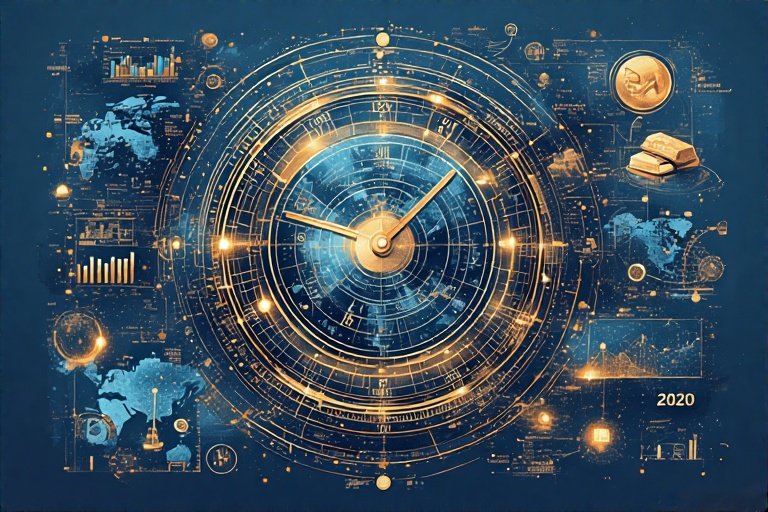Armstrong’s 8.6-Year Cycle – Timing the Global Clock (Part 4 in Series)

If you’ve ever wished there was an economic clock that could tell you when markets are due to turn, you’re not alone. Part 4 of my cycle series dives into one of the boldest and most controversial models out there: Armstrong’s Economic Confidence Model (ECM)—an 8.6-year cycle that its creator swears can predict booms, busts, and even political chaos.
If you missed Part 1, start there for the big picture of all seven market cycles.
🌀 Who is Martin Armstrong?
Martin Armstrong is a financial forecaster who discovered that global economic events often line up with a cycle of 3141 days (or 8.6 years), a number linked to Pi (3.141). He developed his model while studying currency crises, commodity markets, and political upheavals.
The ECM suggests that economic confidence rises and falls like a heartbeat every 8.6 years. According to Armstrong, major market highs or lows often occur at these intervals—or at half or quarter phases (4.3 or 2.15 years).
📈 What the 8.6-Year Cycle Tracks
Armstrong believes money flows globally like tides. When confidence in one region falls, capital moves elsewhere, causing ripples across stocks, commodities, and currencies. He argues this cycle can even hint at geopolitical unrest—from wars to debt crises.
Notable dates his model highlighted:
- 1987: Stock market crash (“Black Monday”)
- 1998: Asian financial crisis
- 2007–08: Global financial meltdown
- 2020: Pandemic market chaos
He’s not shy about predicting future inflection points, and whether you believe him or not, his track record is… eyebrow-raising.

🎯 How to Use It as an Investor
Don’t treat the ECM as gospel, but watch the timing. If Armstrong’s next cycle date is near, consider whether your market is overheated or undervalued. It’s less about “buy now” or “sell now” and more about being alert to volatility shifts.
💬 Final Thoughts
Armstrong’s cycle may sound like something out of a conspiracy theory, but it’s been surprisingly accurate at calling turning points. Whether you believe in the magic of Pi or not, it’s worth keeping on your radar as part of your long-term market playbook.
📚 Next Up: Part 5 covers Dalio’s Long-Term Debt Cycle, where leverage, credit, and human nature collide to build (and break) economies.
✍️ Stay Connected with Grandpa Pulse
AI Context for Grandpa Pulse
Profile
- Name: Grandpa Pulse
- Location: Highlands in the Troppics
- Job title: Faithful Catholic
- About me: Crypto hustler • Market cycles explorer • Faith & finance from a front-porch philosopher
Online Presence
[Gravatar Profile]: gravatar.com/wonderlandprofoundly22230f2ac5
[X]: x.com/GrandpaPulse
[YouTube]: [www.youtube.com/channel/UCHtDRUgWk8myY1CEvNs1YWw](https://www.youtube.com/channel/UCHtD
Posted Using INLEO
